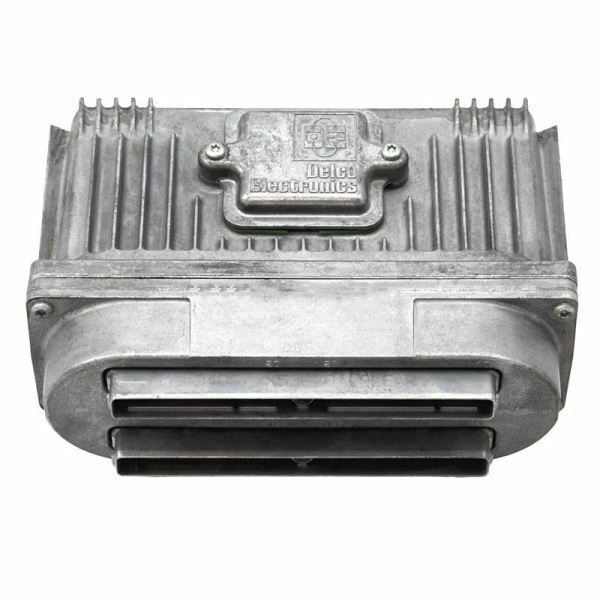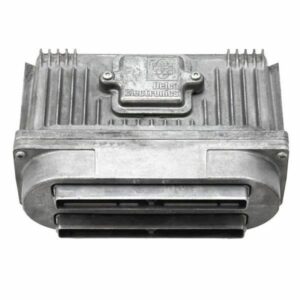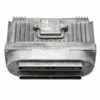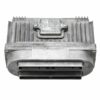Restore Your Vehicle’s Brain and Get Back on the Road with Confidence
If you’re dealing with frustrating and unpredictable issues like a persistent Check Engine Light, poor fuel economy, stalling, or a car that just won’t start, the problem often lies with a failing Powertrain Control Module (PCM). As a technician with over two decades of experience under the hood, I’ve seen how a faulty PCM can mimic a dozen other problems, leading to expensive and incorrect repairs. This module is the central computer of your 1997 GM vehicle, and when it fails, it can cause chaos. This isn’t just a replacement part; it’s the solution to get your car running reliably again.
This PCM is a direct-fit replacement for part numbers 16217058 and 16218070. The best part? We handle the most critical step for you. Before we ship it, we program the module with the latest GM software updates using the unique Vehicle Identification Number (VIN) from your car. This means you get a component that is perfectly matched to your vehicle’s specific configuration, eliminating the need for a costly trip to the dealership for programming. It’s designed to be a straightforward fix for the knowledgeable DIYer or a time-saving solution for the professional shop.
From the Diagnostic Bay: The Case of the Phantom No-Start
A customer brought in a ’97 Regal with the 3.8L V6. The complaint was an intermittent no-start that no one could figure out. It would run fine for weeks, then suddenly refuse to start, only to fire right up an hour later. There were no consistent trouble codes. We checked the fuel pump, ignition system, and crank sensor—all tested fine. After spending hours tracing wires, I noticed that during the no-start events, the PCM wasn’t grounding the fuel pump relay. On a hunch, I gently tapped the PCM with a screwdriver handle, and the car started. The culprit was an internal failure in the original 1997 Cutlass PCM (same family of modules), a hairline crack in a solder joint that would separate when the module’s temperature changed. A new, programmed module fixed it for good. It’s a classic example of how a failing PCM can create a ghost in the machine.
Is Your Vehicle Showing These Classic PCM Failure Signs?
- ✔ Persistent Check Engine Light with internal module codes (e.g., P0601, P0602, P0605).
- ✔ Engine stalling or shutting off unexpectedly while driving.
- ✔ Complete no-start condition where the engine cranks but won’t fire up.
- ✔ Noticeable decrease in fuel mileage.
- ✔ Harsh or erratic automatic transmission shifting.
- ✔ Communication errors with diagnostic scan tools.
- ✔ Intermittent issues that seem to have no logical cause.
Straightforward Guide to Installation
- ✔ Safety First: Always disconnect the negative terminal from your vehicle’s battery and wait at least 15 minutes for any capacitors to discharge before beginning work.
- ✔ Locate the PCM: On most of these 1997 GM models, the PCM is located in the engine bay, often inside the air filter housing or mounted to the firewall.
- ✔ Disconnect Connectors: Carefully unclip and remove the electrical wiring harnesses connected to the old module. Inspect the connectors for any corrosion or damage.
- ✔ Remove Old Module: Unbolt the mounting hardware holding the original PCM in place and remove it from the vehicle.
- ✔ Install New Module: Mount your new, pre-programmed PCM in the same location and secure it with the original hardware.
- ✔ Reconnect Everything: Firmly plug the wiring harnesses back into the new module. Reconnect the negative battery terminal.
- ✔ Final Steps: In some cases, a security relearn procedure (often called Passlock or Passkey) may be required. This can typically be done without special tools by cycling the ignition key. Consult your vehicle’s service manual for the specific procedure if needed.
Verified Compatibility for Your 1997 GM Vehicle
This electronic control module is a guaranteed fit for the following 1997 models. Please ensure your vehicle matches one of the options listed below.
Chevrolet: Lumina Car (3.1L), Monte Carlo (3.1L), Venture (3.4L)
Oldsmobile: Achieva (3.1L), Cutlass (Supreme), Eighty Eight (3.8L w/o supercharger), Silhouette (3.4L)
Pontiac: Bonneville (3.8L w/o supercharger), Grand Am (3.1L), Grand Prix (3.1L or 3.8L w/o supercharger), Trans Sport (3.4L)
Frequently Asked Questions
Frequently Asked Questions
Why do you need my VIN?
Your Vehicle Identification Number (VIN) allows us to program the module with the exact software and calibrations your specific vehicle requires. This ensures perfect compatibility with your engine, transmission, and options, just like a module from the original dealer.
Is any additional programming needed after installation?
No, this module arrives fully programmed and ready for installation. On some GM vehicles, you may need to perform a simple security relearn procedure, which typically involves cycling the ignition key and does not require special tools. We recommend checking your owner’s manual for specifics.
What is the difference between an ECM and a PCM?
The terms are often used interchangeably. ECM stands for Engine Control Module, while PCM means Powertrain Control Module. A PCM controls both the engine and the transmission, which is the case for this part. For all practical purposes in this context, the terms refer to the same component.
How can I confirm this is the right part for my car?
The best way is to match the part number from your existing module to one of the numbers listed here (16217058 or 16218070). You can also verify your vehicle is on our compatibility list. Providing your VIN at checkout allows us to perform a final check for you.
Will this fix my check engine light?
If the check engine light is caused by an internal failure of the PCM (common codes include P0601-P0606), then this part is the correct fix. However, a check engine light can be triggered by hundreds of other issues. It’s always best to have the codes read with a scanner to properly diagnose the root cause before ordering parts.



